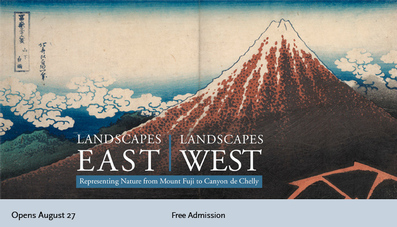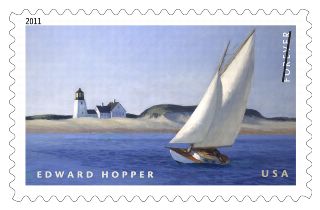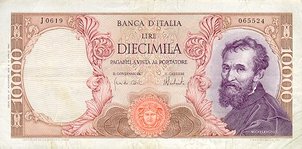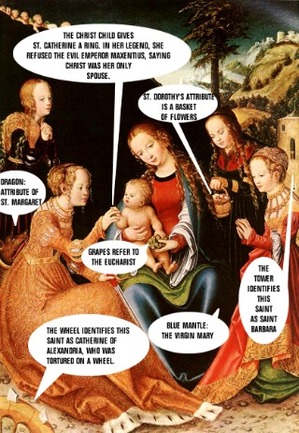East or West? Which culture started art’s love affair with nature? How many curators does it take to provide the answers?
 A soon-to-open exhibition at the Nelson-Atkins Museum of Art doesn’t quite ask those questions, partly because some of answer is very clear, but it got me thinking nonetheless.
A soon-to-open exhibition at the Nelson-Atkins Museum of Art doesn’t quite ask those questions, partly because some of answer is very clear, but it got me thinking nonetheless.
It was the East, of course. Landscapes East/Landscapes West: Representing Nature from Mount Fugi to Canyon de Chelly opens on Aug. 27 with this premise:
…The widely differing forms and styles of these images [by artists in different times and places] reflect not merely the diverse scenery artists encountered, but also their artistic materials, cultural attitudes to nature, and individual creativity.
…By the end of the 10th century, landscape had become the backbone of Chinese painting, a role it continues to play today. Interest in landscape arose later in the West, where it was first used as a background for figures, often in Biblical settings. In 17th century Europe, however, landscape painting emerged as a distinct genre, and by the 19th, it came to rival figure painting in importance. During the middle of the 19th century photography, especially in America, embraced landscape as a central theme. …
Great subject. If you can’t get to Kansas City, you can explore it on the N-A website, where a brief summary shows the exhibition broken down into “ways of seeing,” “humans and nature,” “a sense of place,” and “artists’ practices.” Or just jump to the image captions, and look at the sample artworks all at once. I couldn’t comment on the show, other than its subject, from afar, based on such a small sample of images.
Rather, I have another reason to highlight this exhibition: It’s the result of a collaboration among six curatorial departments at the N-A. They weren’t named in the press release, but as the show includes paintings, drawing, prints and photographs, from Asia, America and Europe, from the 15th Century through now, you can guess.
This is the direction museums are evolving: breaking down silos and devising exhibitions that may have a closer connection to real life and broader appeal.
It goes without saying that that would be a good thing, so I hope this exhibition lives up to its billing.
Photo Credit: Courtesy of the Nelson-Atkins Museum

 On Aug. 24, the U.S. Postal Service will issue a 44-cent “Forever” stamp depicting Edward Hopper’s The Long Leg, a sailboat he painted around 1930 near
On Aug. 24, the U.S. Postal Service will issue a 44-cent “Forever” stamp depicting Edward Hopper’s The Long Leg, a sailboat he painted around 1930 near 

 Headlined “
Headlined “